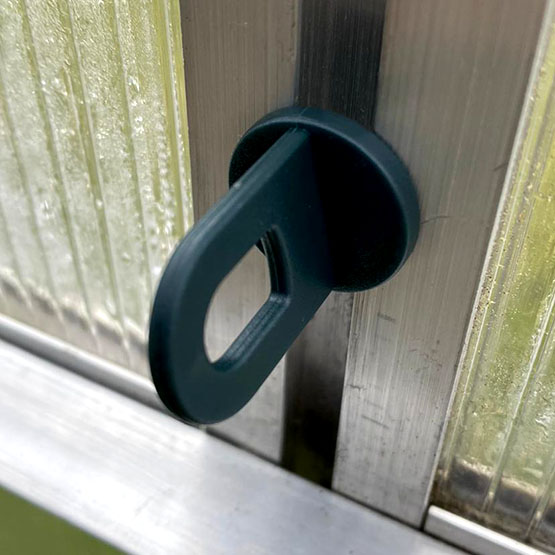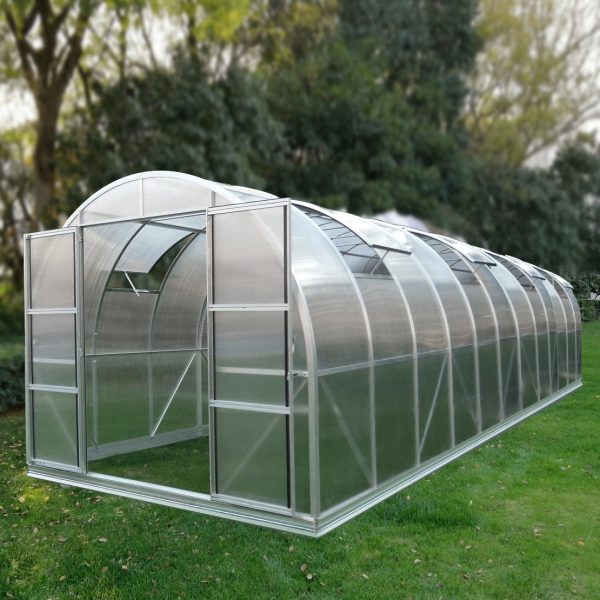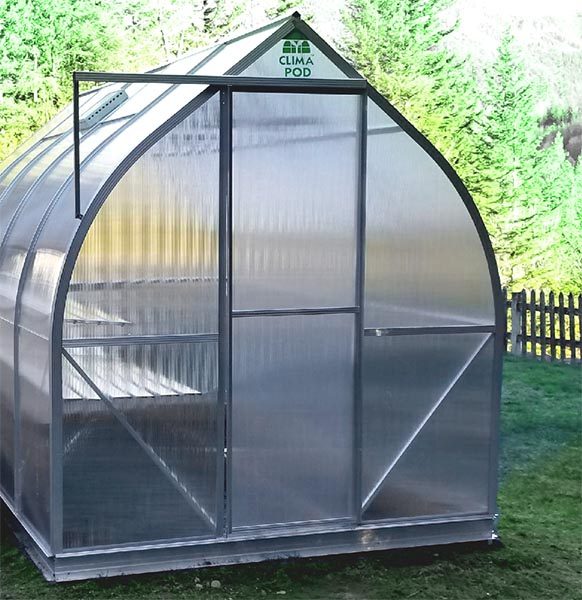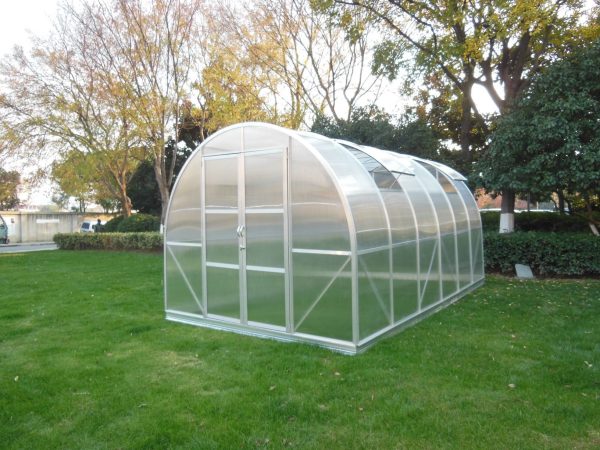A winter greenhouse lets you grow fresh food all year round. But you need to know these 5 tips for winter greenhouse care to avoid disaster. Winter greenhouses require special care.
Whether you’re a greenhouse veteran or just a beginner, here are 5 tips to give your garden the best results:
- It’s important to clean all irrigation hoses, ventilate the air, and install any heating or lighting systems before starting your crops.
- Remove all old plants and any decomposing matter to prevent the spread of pests and diseases.
- If you grow during winter, you need to ventilate the greenhouse at least twice a day. All greenhouses need to be ventilated, whether they are heated or not.
- If your soil is too cold, seeds may not germinate, but when soil is too hot, it can stunt plant growth and breed disease.
- Winter plants need fresh compost and fertilizer to help with tougher growing conditions. Winter is a great time to start slow-growing plants for the spring.
Prepare Your Greenhouse For Winter
In order to grow healthy plants, you need to prepare your greenhouse for winter before you start your crops. It’s important to clean all irrigation hoses, ventilate the air, remove old plants, and install any heating or lighting systems to ensure a clean and suitable climate.
When you’re not growing over the winter, it’s best to disconnect all electrical hookups and empty the irrigation system to prevent freezing damage. Even if you are going to grow through the winter, you should rinse out and treat your water lines at the end of the fall to extend the lifespan of your equipment.
- It’s important to clean all irrigation hoses, ventilate the air, and install any heating or lighting systems before starting your crops.
- Remove all the old plants and any decomposing matter to prevent the spread of pests and diseases.
If you grew anything over the spring or fall, you need to remove all the old plants and any decomposing matter. You may think it’s better to leave old plants in the soil as compost, but the decay is more likely to cause disease! If any plants or beds have suffered from pests during the season, you need to thoroughly clean them.
Any soil or beds that were in contact with sick plants are likely to contain parasites, spores, insect eggs, or fungi from the old plants that will make a nasty return in the spring. Remove any contaminated soil and treat or dispose of it. Then burn the remains of any plants before disposing of them as well (but never back into your compost!). Wash the inside of the greenhouse with warm, soapy water, and clean up any wet mud, mosses, or spills on the floor. Even a natural soil floor needs to be well maintained.
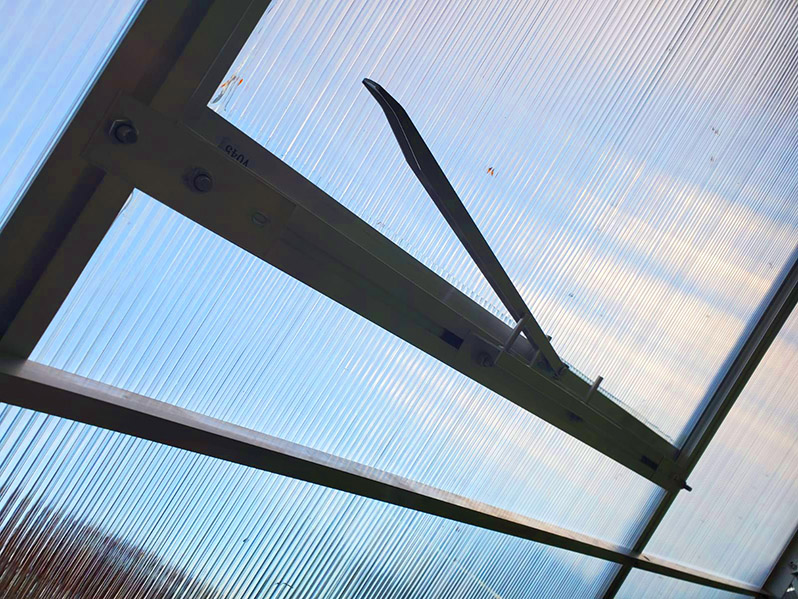
Ventilation is a critical part of growing plants– they are living creatures that need fresh air to survive. All greenhouses need to be ventilated whether they are heated or not, but the frequency depends on your individual greenhouse. When you’re not growing for the winter, you should air your greenhouse out, but it’s up to you whether to leave it open or closed for the season. If you’re going to grow over the winter, you need to ventilate at least twice a day, but larger or more humid greenhouses may need to be ventilated more often.
An important part of letting cold air in is giving it time to warm up before it reaches your plants. If freezing air from outside touches warm plants, it can still damage or frostbite them, so ventilation shafts or fans are needed to circulate and warm up the air as it comes in.
If you grow during winter, you need to ventilate the greenhouse at least twice a day. You should ventilate your greenhouse more often if it is heated. You should ventilate your greenhouse, whether it is heated or not.
- Heated greenhouses tend to produce more humidity, and without ventilation, the air will become musty and difficult for the plants to breathe. When greenhouses go too long without ventilation, plants will become stunted, or even suffocate! The humidity level can be even more important than the temperature. Try to keep the humidity in your greenhouse around 60-70%. The higher the humidity inside the greenhouse, the more often you need to ventilate it. A hot greenhouse in a cold climate may need to be ventilated multiple times an hour for the best results.
- In unheated greenhouses, the “heating” comes from the protection the greenhouse provides on its own. The structure protects from wind chill and the worst of the weather, but without a heat source the temperatures will be lower. Unheated greenhouses may be warmer or cooler depending on the type and thickness of the greenhouse insulation. But there are many ways to improve your greenhouse’s heat retention. They are: foam blocks around the walls, horticultural fleece over the plants, or solar heat sinks are cheap and effective at keeping heat in. It’s still important to ventilate your greenhouse a few times every day to ensure your plants are getting enough fresh air!
To read more about greenhouse heating, click here.
Temperatures In The Greenhouse
The plants you will be growing during the winter will depend on the temperatures in the greenhouse. So it’s important to measure the temperature of your air and soil carefully. When soil is too cold, seeds may not germinate, but when soil is too hot, it can stunt plant growth. Plants grow more slowly and may begin to hibernate below 55 degrees Fahrenheit.
Keep at least one thermometer in and outside of your greenhouse, and try recording the temperatures on both at various times of the day. This can help you better understand how your greenhouse handles the cold, and lets you moderate your heating method most effectively for your specific situation. Even with heating, your greenhouses’ winter climate may be cooler than its summer climate, so select your seeds accordingly.
If your soil is too cold, seeds may not germinate, but when soil is too hot, it can stunt plant growth and breed disease.
Winter Plants

Winter plants especially need fresh compost and fertilizer to help compensate for what may be tougher growing conditions. The plants you grow at the end of the year can flourish all through the next season. So you should plan accordingly. It’s a great time for starting fruiting or slow-growing plants that you plan on planting outdoors in the spring. Hardy vegetables, tubers, and roots are a low maintenance plant that still gives fresh produce for the off-season.
Winter plants need fresh compost and fertilizer to help with tougher growing conditions. Winter is a great time to start slow-growing plants for the spring.
No heating? No problem! It’s still very possible to keep year-round unheated greenhouses depending on your location. And for temperate gardeners, this can be a more affordable option than investing in a complete winter heating system. For example, there are many low maintenance root vegetables and leafy greens that can flourish even at temperatures as low as 30 degrees Fahrenheit! However, plants grow much more slowly the colder they are. So some gardeners prefer to use their unheated greenhouses as a place their more delicate plants can hibernate for the season.
To read more about greenhouse heating, click here.
Wrap Up
Winter greenhouses are a great way to get fresh produce all year long. But they require early preparation, careful observation, and some trial and error to maximize their efficiency. Remember these winter greenhouse care tips, and you’ll have beautiful winter plants every time!
- It’s important to clean all irrigation hoses, ventilate the air, and install any heating or lighting systems.
- Remove all old plants and any decomposing matter to prevent the spread of pests and diseases.
- If you grow during winter, you need to ventilate the greenhouse at least twice a day. All greenhouses need to be ventilated, whether they are heated or not.
- If your soil is too cold, seeds may not germinate. But when soil is too hot, it can stunt plant growth and breed disease.
- Winter plants need fresh compost and fertilizer to help with tougher growing conditions. Winter is a great time to start slow-growing plants for the spring.
For more articles about greenhouse care, click here.
Looking to buy or upgrade your greenhouse? Find easy-to-assemble, durable, and quality greenhouses that don’t break the bank at ClimaPod.com!
Author: JG


